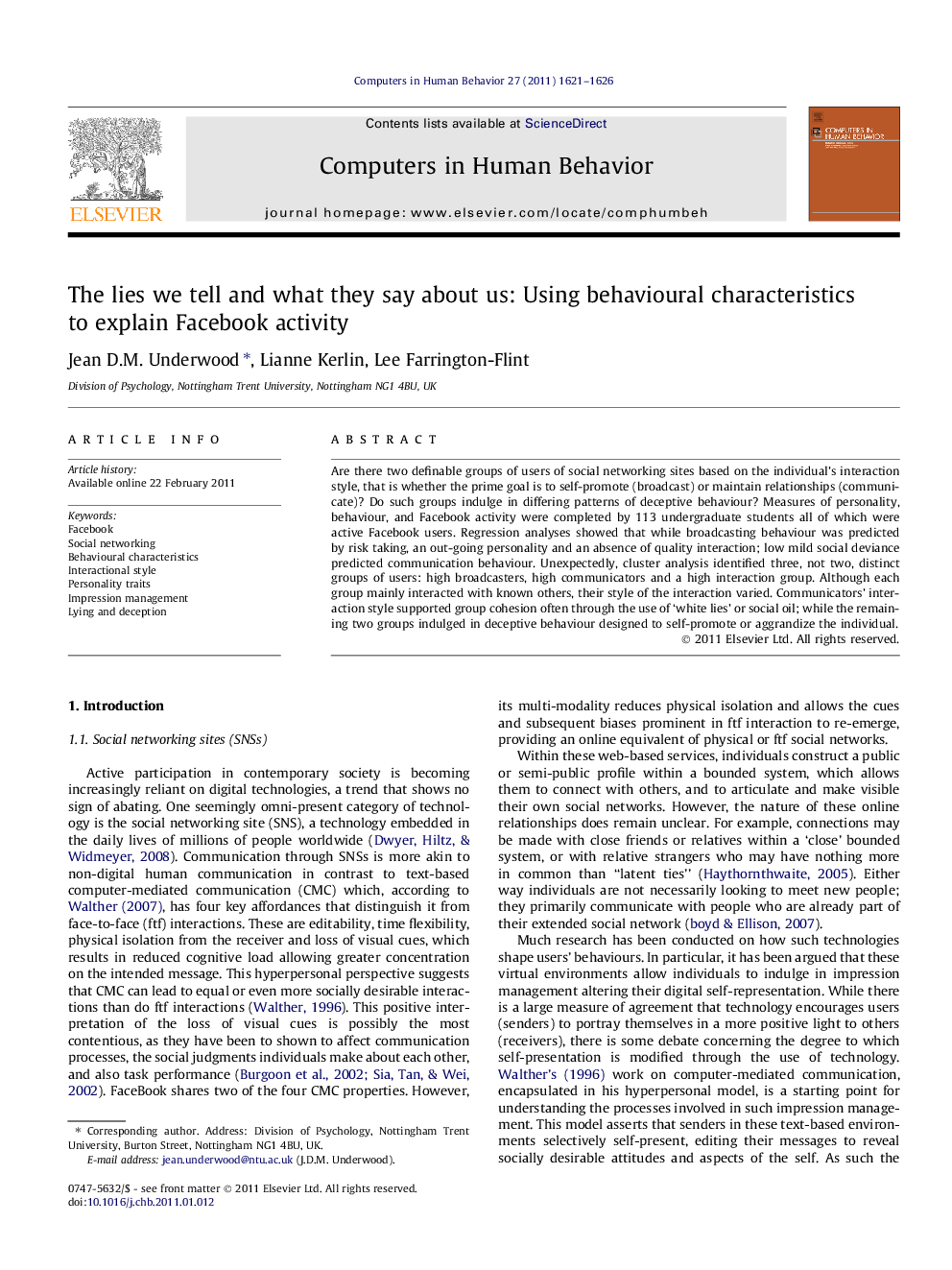| کد مقاله | کد نشریه | سال انتشار | مقاله انگلیسی | نسخه تمام متن |
|---|---|---|---|---|
| 350969 | 618461 | 2011 | 6 صفحه PDF | دانلود رایگان |

Are there two definable groups of users of social networking sites based on the individual’s interaction style, that is whether the prime goal is to self-promote (broadcast) or maintain relationships (communicate)? Do such groups indulge in differing patterns of deceptive behaviour? Measures of personality, behaviour, and Facebook activity were completed by 113 undergraduate students all of which were active Facebook users. Regression analyses showed that while broadcasting behaviour was predicted by risk taking, an out-going personality and an absence of quality interaction; low mild social deviance predicted communication behaviour. Unexpectedly, cluster analysis identified three, not two, distinct groups of users: high broadcasters, high communicators and a high interaction group. Although each group mainly interacted with known others, their style of the interaction varied. Communicators’ interaction style supported group cohesion often through the use of ‘white lies’ or social oil; while the remaining two groups indulged in deceptive behaviour designed to self-promote or aggrandize the individual.
Research highlights
► Broadcasters, communicators and high interaction FaceBook users were identified.
► Quality of interaction, deceptive behavior and acceptance of risk were group markers.
► Communicators lied to enhance the group but non-communicators self promoted.
► Acceptance of risk and low quality interaction marked out Broadcasters.
► Broadcasters’ behaviour raised their exposure to the ills of the Internet.
Journal: Computers in Human Behavior - Volume 27, Issue 5, September 2011, Pages 1621–1626